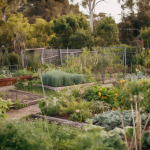It’s time to break free from the tyranny of the lawn! With a little creativity, you can create a beautiful, low maintenance yard that is both eco-friendly and aesthetically pleasing. Here are some of our favorite alternatives to the traditional lawn:
Ground Covers: Ground covers are a great way to reduce the amount of mowing and weeding you have to do. They’re also great for preventing soil erosion and can be used to create interesting patterns in your yard. Some of the most popular ground covers include creeping thyme, sedum, and creeping phlox.
Native Plants: Native plants are a great way to add color and texture to your yard without having to worry about mowing or weeding. Native plants are also better for the environment because they require less water and fertilizer than non-native plants. Some of the most popular native plants include wildflowers, grasses, and shrubs.
Mulch: Mulch is an excellent way to reduce the amount of weeds in your yard and also helps retain moisture in the soil. It can also be used to create interesting patterns in your yard. Some of the most popular types of mulch include wood chips, bark chips, and shredded leaves.
Artificial Turf: Artificial turf is becoming increasingly popular as an alternative to traditional lawns. It requires no maintenance, is easy to install, and is more eco-friendly than traditional lawns. It also looks great and can be used to create interesting patterns in your yard.
These are just a few of the many alternatives to traditional lawns that you can use to create a beautiful, low maintenance yard. So don’t be afraid to challenge your neighborhood’s idea of a “lawn” and get creative with your landscaping! With a little bit of effort, you can create a yard that is both beautiful and eco-friendly.



GIPHY App Key not set. Please check settings